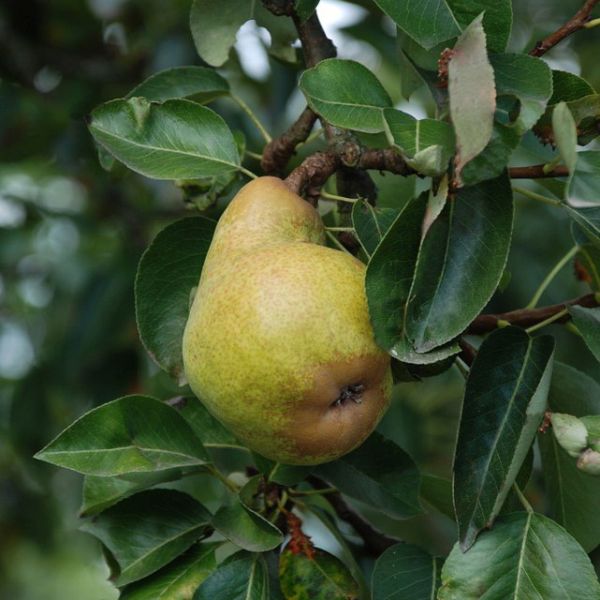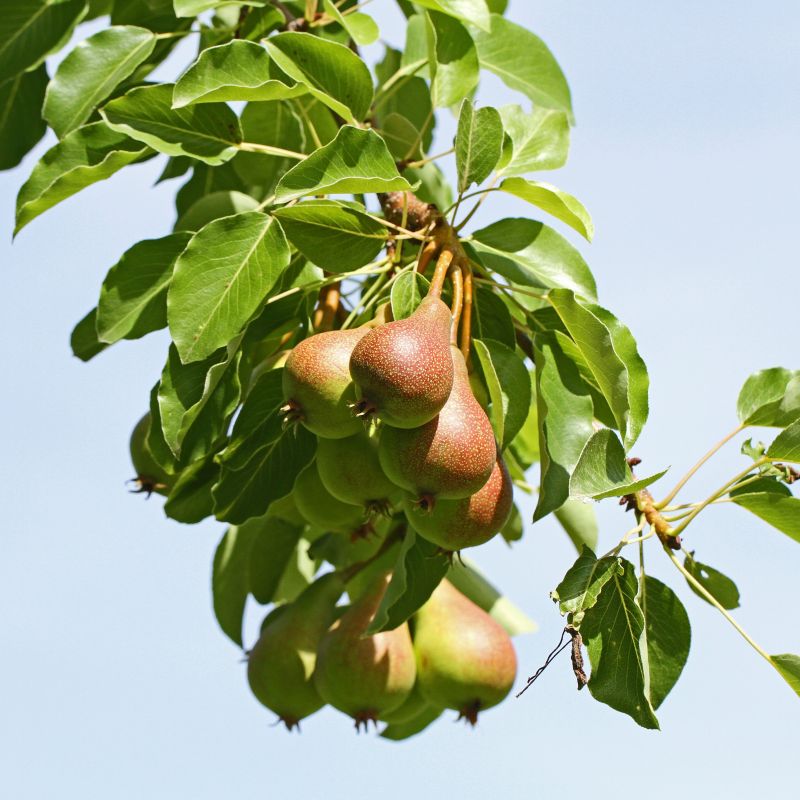Ship to: 43215 Update

- Plants
- Fruit Trees
- Fruit Trees
- Pear Trees
Plants Filter
Current Filters
Mature Height
Sunlight
Plant Type
Pear Trees
The pear tree, belonging to the genus Pyrus, is a deciduous fruit tree known for its tasty and juicy fruits, also called pears. Pears are believed to have originated in Europe and Asia and have been cultivated for thousands of years. Pear trees have attractive white or pink blossoms in spring, making them not only valuable for their fruit but also for their ornamental value. Pears come in various shapes, sizes, and flavors, offering a wide range of culinary possibilities.
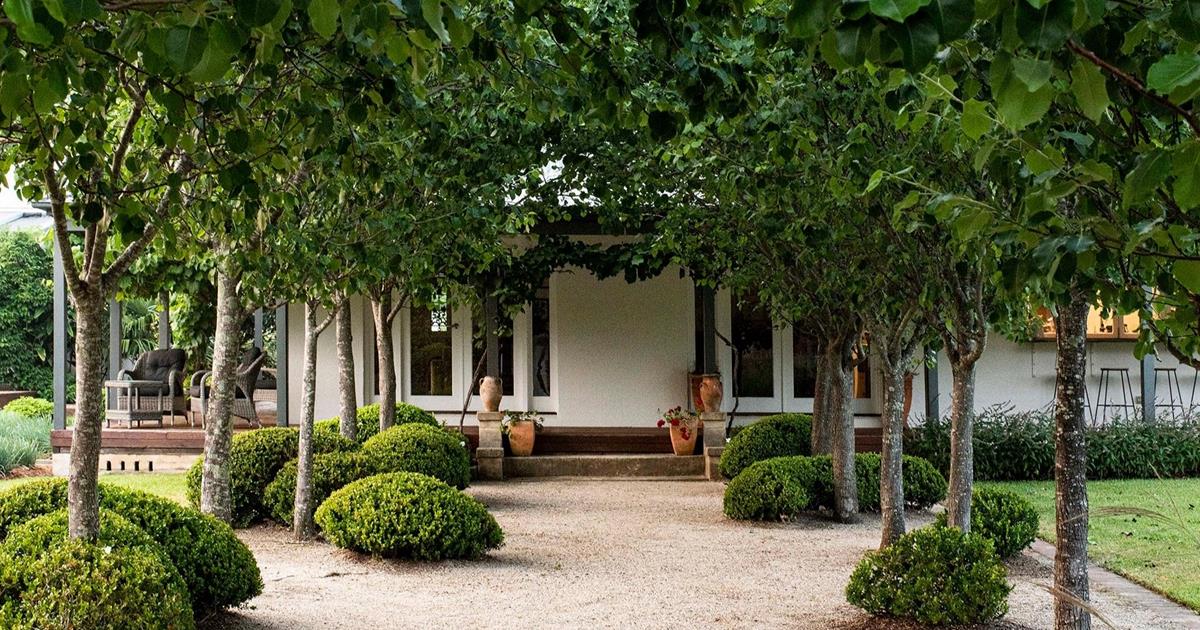
Varieties: There are many pear varieties, each with its own unique characteristics. Some common pear varieties include:
- Bartlett (Williams): One of the most popular and commonly grown pears, Bartlett pears have a sweet and juicy flavor with a smooth, thin skin that turns from green to yellow as they ripen.
- Anjou: Anjou pears are known for their sweet, juicy, and slightly tart flavor. They have a dense, smooth texture and come in green and red varieties.
- Bosc: Bosc pears have a distinct elongated neck and a firm, dense flesh with a sweet and aromatic flavor.
- Asian Pears: These pears are crisp, juicy, and often have a more apple-like texture. They come in various varieties, such as Hosui, Shinko, and Shinseiki.
- Comice: Comice pears are sweet and juicy, with a smooth, melting texture. They are often considered one of the sweetest pear varieties.
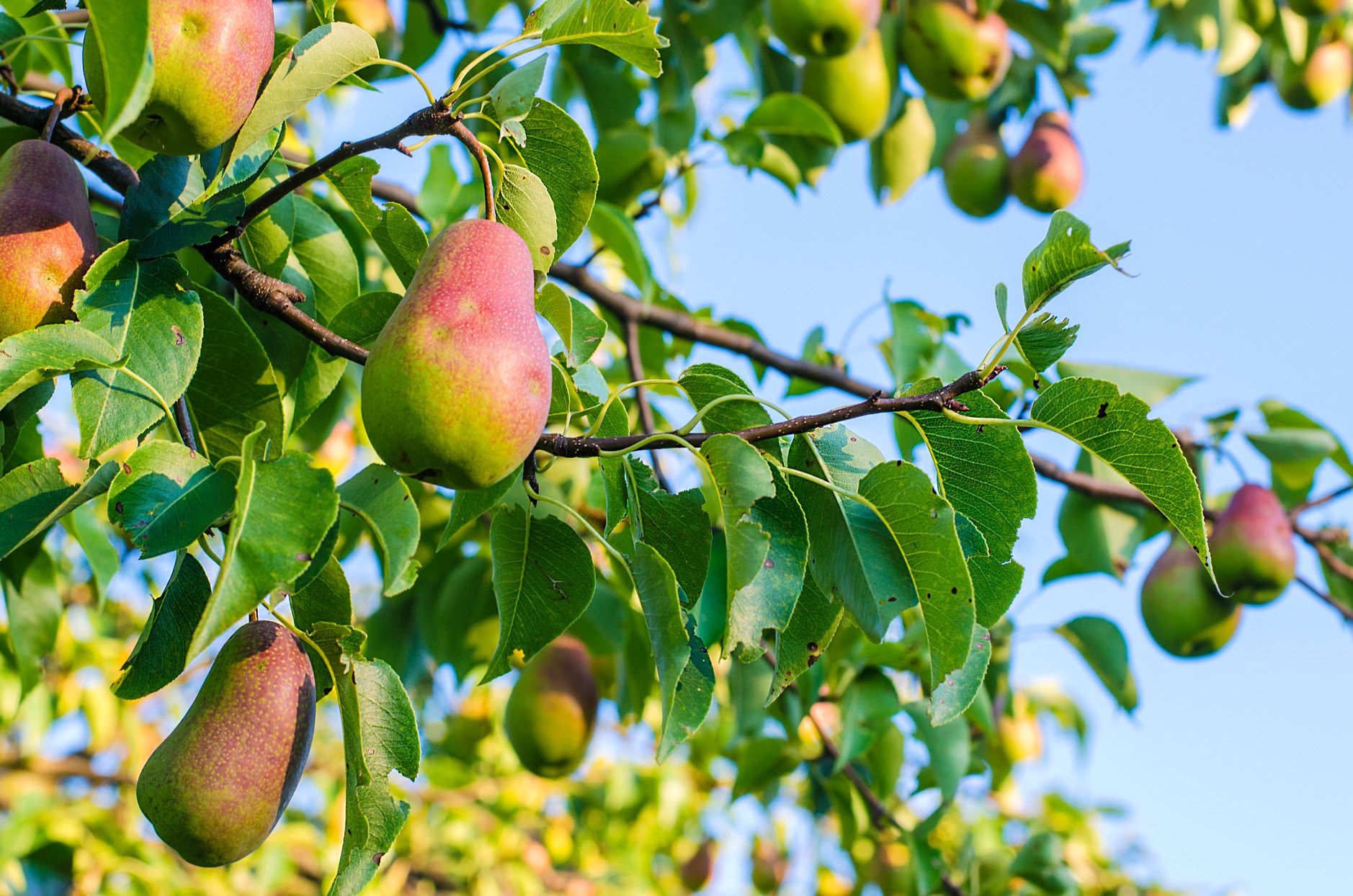
Care Tips:
- Location: Plant pear trees in a spot with full sun to ensure optimal flowering and fruiting. They prefer well-draining soil with good organic matter.
- Pollination: Most pear varieties are not self-pollinating and require cross-pollination with another compatible pear variety to set fruit. Some varieties are self-pollinating.
- Watering: Keep young pear trees well-watered to establish their root systems. Once established, they have moderate water needs.
- Pruning: Regular pruning is essential for pear trees to remove dead or diseased wood, improve air circulation, and shape the tree for better fruit production. Prune in late winter or early spring before new growth begins.
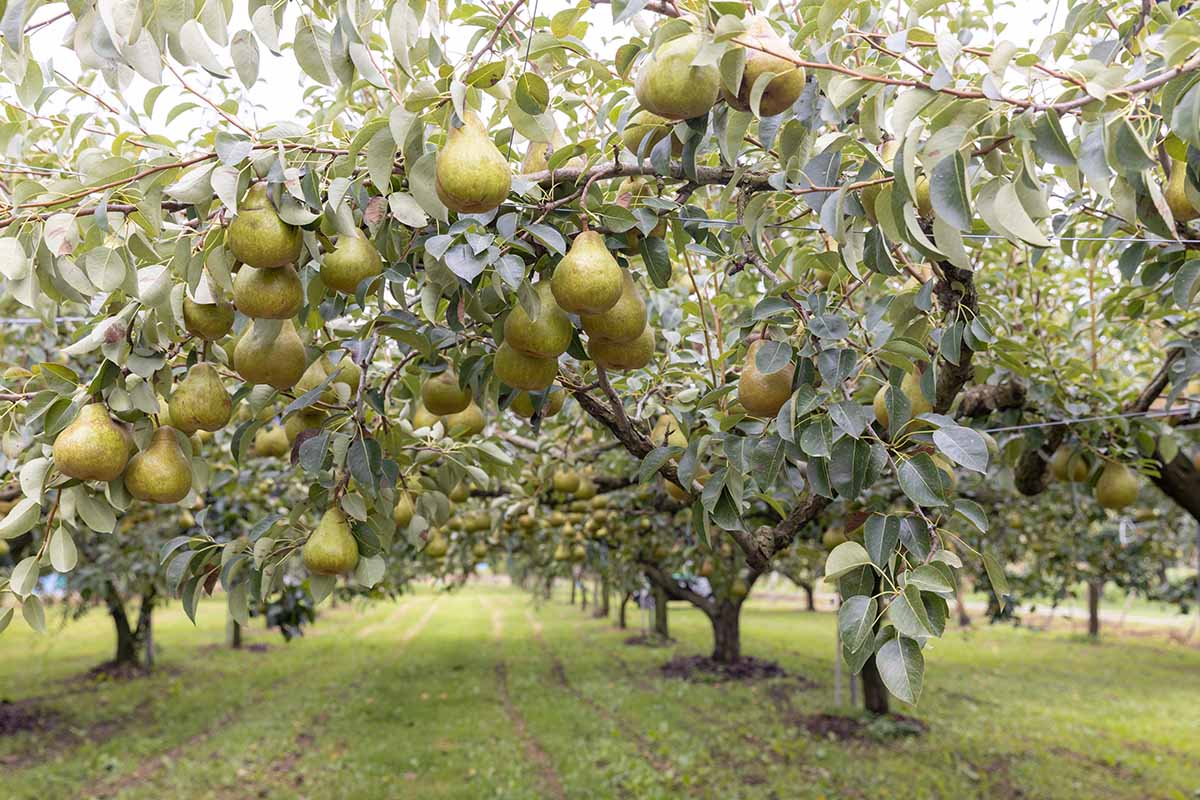
Uses:
- Fresh Consumption: Pears are delicious when eaten fresh, offering a sweet and juicy flavor.
- Culinary Dishes: Pears are used in various culinary creations, including desserts, salads, sauces, and preserves.
- Canning and Preserving: Pears can be canned or preserved to enjoy their flavor throughout the year.
- Pear Pies and Tarts: Pears are commonly used in pies, tarts, and other baked goods.
Pears are wonderful fruit trees to have in home gardens and orchards, providing a bountiful harvest of delicious fruits and adding beauty to the landscape with their spring blossoms. With proper care and attention, pear trees can thrive and become a cherished addition to any garden, rewarding you with sweet and juicy pears for years to come.
Item has been added to your cart.


